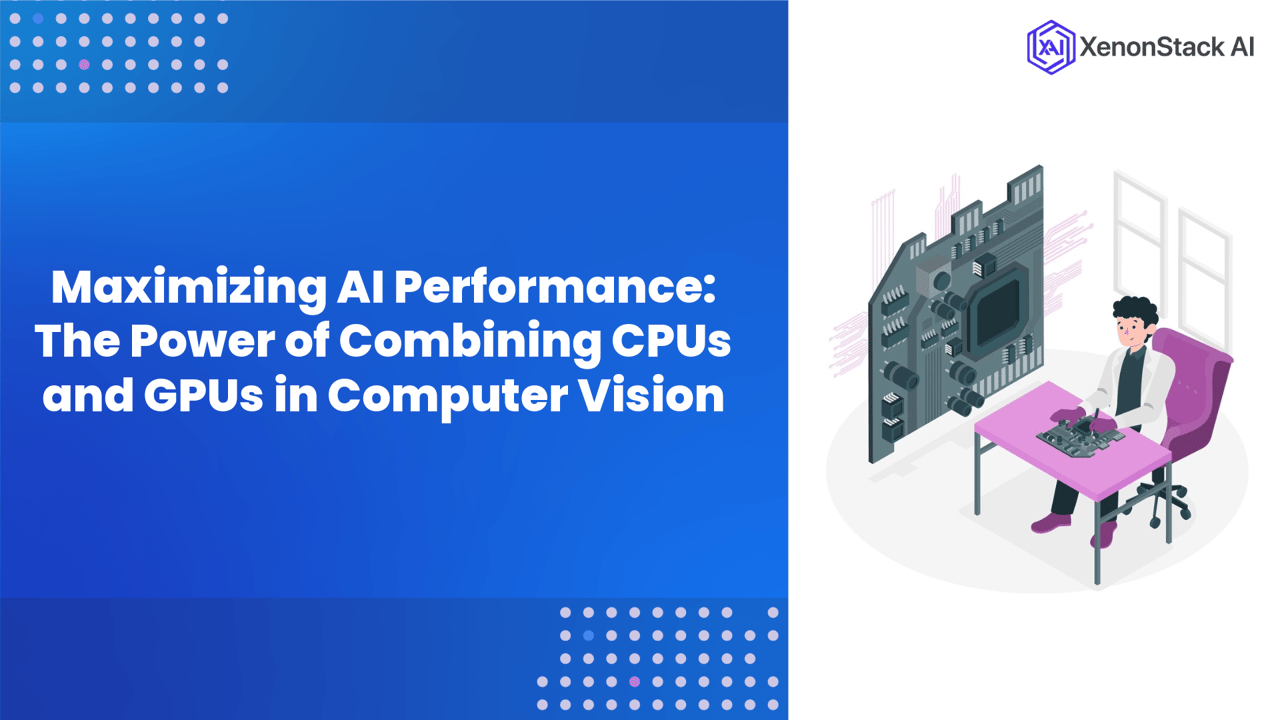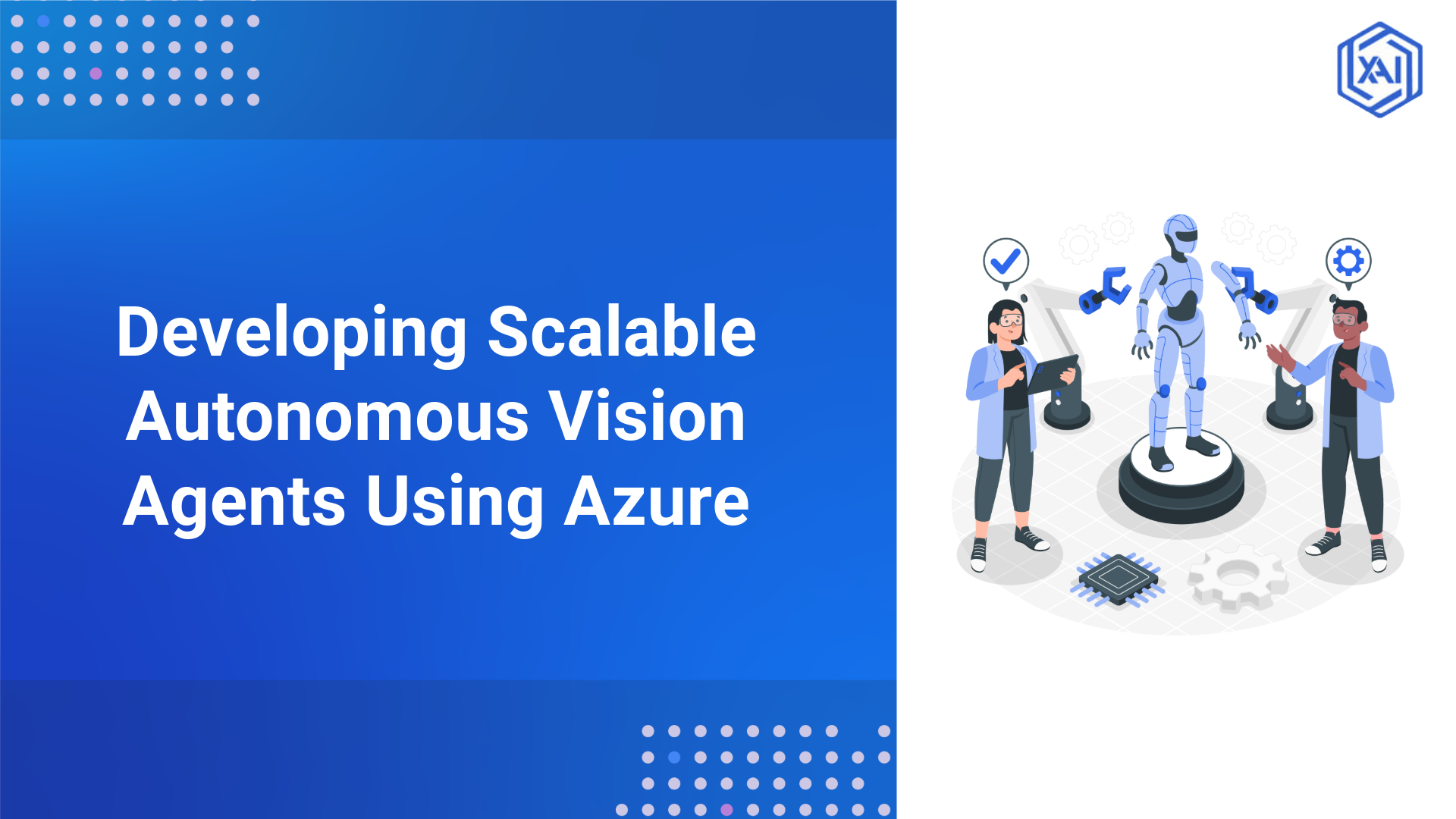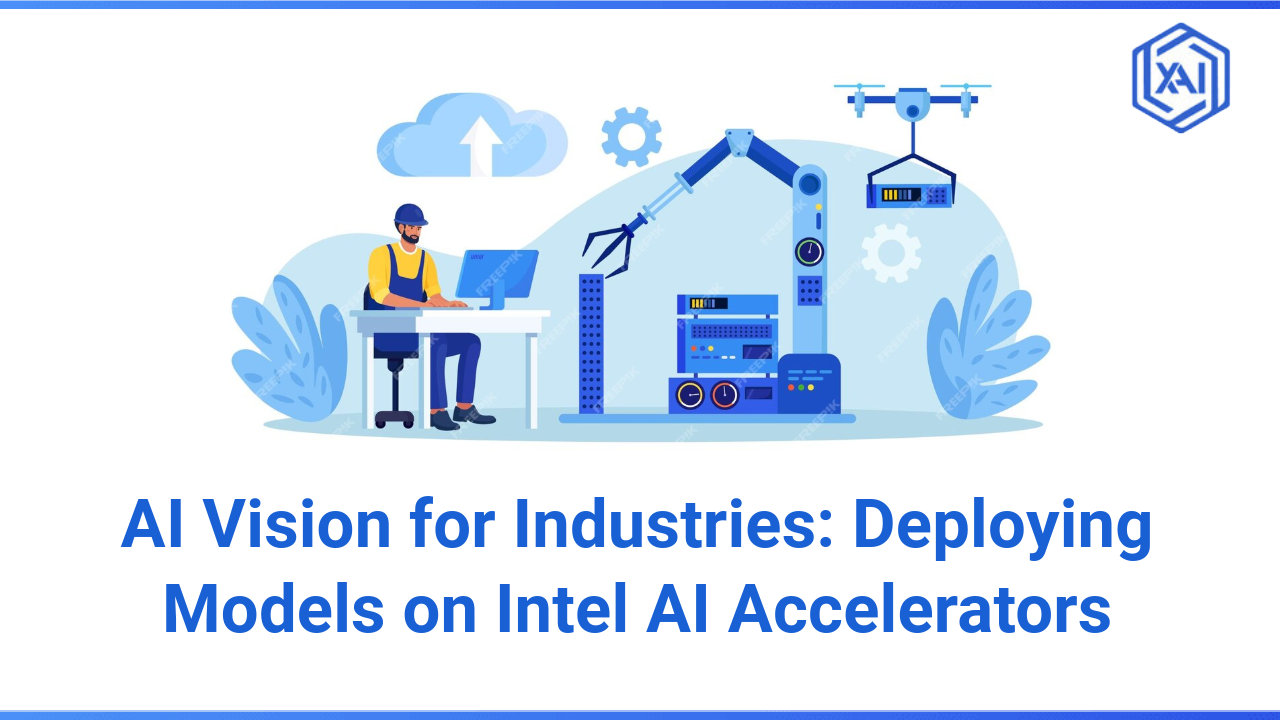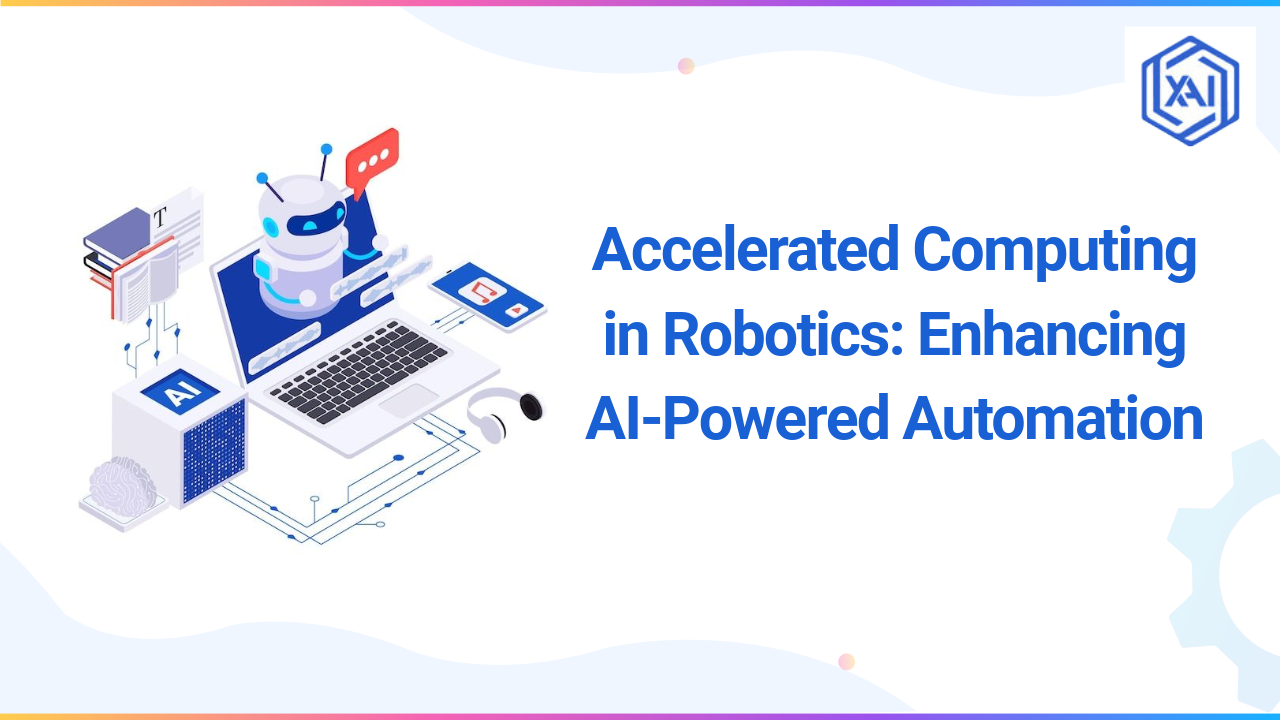
Comparative Analysis: When to Use CPUs vs. GPUs
CPUs and GPUs play distinct yet complementary roles in AI workloads. Rather than relying solely on one, a hybrid approach strategically assigns tasks to the processor best suited for each operation. Below is a comparison of when to use CPUs and when to use GPUs for optimal performance.
When to Use CPUs
-
Data Preprocessing & Augmentation: CPUs handle structured data and tasks like resizing images or normalizing datasets, as they work well with sequential operations and branching logic.
-
Task Scheduling & System Control: CPUs manage system processes like model inference, memory management, and coordinating data transfer between devices in AI pipelines.
When to Use GPUs
-
Deep Learning Training & Inference: GPUs excel in parallel computations, speeding up tasks like CNN, RNN, and transformer model training and inference.
-
Real-Time Computer Vision: GPUs handle real-time object detection, image segmentation, and video processing, ensuring low-latency performance in applications like autonomous driving and video analytics.
Why Hybrid AI is Key for Computer Vision
Parallel vs. Hybrid AI Processing
Traditional parallel processing involves distributing computations across multiple cores of a single type of processor (either CPU or GPU). Hybrid AI processing, on the other hand, optimally distributes tasks between CPUs and GPUs, leveraging their strengths for a more balanced workload execution.
Advantages of a CPU-GPU Hybrid Approach
-
Optimized Resource Utilization: CPU-GPU coordination allows each processor to handle tasks best suited for its architecture.
-
Improved Processing Speed: By offloading deep learning computations to GPUs and keeping control logic on CPUs, models can run faster.
-
Energy Efficiency: Hybrid processing can reduce energy consumption by ensuring that high-power GPUs are only used when necessary.
-
Scalability: This approach enables scaling AI applications across various hardware configurations, from edge devices to cloud-based clusters.
Challenges and Bottlenecks in the CPU-GPU Hybrid Approach
-
Data Transfer Overhead: Moving data between CPU and GPU memory can introduce latency.
-
Software Complexity: Managing workload distribution requires specialized frameworks and fine-tuned configurations.
-
Hardware Compatibility: Not all AI workloads can seamlessly transition to a hybrid model without optimizations.
Optimizing Computer Vision Workloads with CPU-GPU Hybrid Processing
Data Preprocessing on CPUs
CPUs handle image loading, resizing, augmentation, and normalization efficiently. By keeping these operations on the CPU, the GPU can focus purely on intensive computational tasks. Tools like OpenCV and NumPy facilitate fast CPU-based preprocessing.
Deep Learning Inference on GPUs
Deep learning models involve large-scale tensor operations that benefit from GPU acceleration. Running inference on a GPU significantly reduces latency for tasks like object detection, facial recognition, and image classification.
Balancing Computational Loads Between CPU & GPU
Workload balancing is critical to hybrid processing. The following strategies can help achieve this:
-
Task Offloading: Assign preprocessing and post-processing to CPUs while using GPUs for heavy computations.
-
Batch Processing: Reduce CPU-GPU communication overhead by processing larger data batches.
-
Pipelining: Establish a continuous flow of data between CPU and GPU to prevent bottlenecks.
Asynchronous Processing and Task Offloading
Modern AI frameworks enable asynchronous processing, where the CPU and GPU work simultaneously rather than waiting for each other to complete tasks. Libraries like TensorFlow’s tf.data API and PyTorch’s DataLoader optimize this workflow.
TensorFlow is a powerful tool for deep learning, driving advancements in tasks like image recognition and NLP. To learn more about its architecture and benefits, explore the full details on our blog here.
How to Implement Hybrid AI Processing
Choosing the Right Hardware
Selecting an appropriate CPU-GPU combination depends on the application’s requirements. For real-time CV applications, a high-performance GPU (such as an NVIDIA RTX or A100) paired with a multi-core CPU (such as an AMD Ryzen or Intel Xeon) is ideal.
Hybrid AI Software and Frameworks
-
OpenCV with CUDA: OpenCV integrates CUDA for GPU acceleration, allowing optimized image processing.
-
TensorFlow & PyTorch CPU-GPU Optimization: Both frameworks support automatic device selection, enabling seamless CPU-GPU switching.
-
Intel OpenVINO & NVIDIA TensorRT: These frameworks optimize deep learning inference by balancing workloads between CPU and GPU for faster execution.
Optimizing Memory and Data Transfers
To minimize data transfer overhead:
-
Use Unified Memory (UMA): NVIDIA’s Unified Memory architecture enables shared memory access between CPU and GPU.
-
Reduce Redundant Transfers: Keep frequently accessed data in GPU memory.
-
Prefetch Data: Load data asynchronously to prevent bottlenecks.
Hybrid AI Performance Benchmarks in Computer Vision
Comparing CPU-Only, GPU-Only, and Hybrid Performance
Benchmarking AI workloads across different processing architectures provides valuable insights into the efficiency and speed of hybrid AI processing. Below is a comparison of CPU-only, GPU-only, and hybrid approaches in terms of inference time, power efficiency, and resource utilization.
CPU-Only Execution
-
Performance: CPUs handle AI inference well for lightweight models and smaller datasets but struggle with deep learning workloads requiring heavy matrix computations.
-
Latency: Inference times are significantly higher due to limited parallel processing capabilities.
-
Best Use Cases: Suitable for preprocessing, feature extraction, and tasks where real-time performance is not critical.
GPU-Only Execution
-
Performance: GPUs excel at deep learning tasks, significantly reducing inference times for large-scale models.
-
Latency: Provides low-latency execution for complex computer vision tasks but may suffer from bottlenecks when handling non-parallel tasks such as data preprocessing.
-
Best Use Cases: Ideal for training and real-time inference in applications like object detection, segmentation, and autonomous systems.
Hybrid CPU-GPU Execution
Performance
By offloading preprocessing and logic-based operations to the CPU while reserving the GPU for computationally heavy tasks, hybrid processing achieves superior efficiency.
Latency
Hybrid approaches have been observed to reduce inference times by 30-50% compared to CPU-only execution, ensuring faster response times without overloading the GPU.
Best Use Cases
Optimal for real-time applications requiring both computational efficiency and control logic, such as autonomous driving, medical imaging, and industrial automation.
Benchmark Example: Object Detection with YOLOv5
A benchmark on YOLOv5 (You Only Look Once) object detection running across different configurations yielded the following results:
|
Processing Mode |
Inference Time per Frame |
Power Consumption |
|
CPU Only |
~150 ms |
Low |
|
GPU Only |
~10 ms |
High |
|
Hybrid CPU-GPU |
5-7 ms |
Optimized |
These results show that hybrid processing not only accelerates inference speed but also optimizes power consumption by strategically distributing workloads.
Challenges in Hybrid AI Processing and How to Solve Them
Despite its advantages, hybrid AI processing comes with several challenges that must be addressed for optimal performance. These challenges primarily revolve around system efficiency, software compatibility, and hardware constraints.
Current Limitations in CPU-GPU Hybrid Processing
Synchronization Issues and Latency
Efficiently coordinating data flow between the CPU and GPU can be challenging. If not managed properly, synchronization delays can create bottlenecks, reducing the benefits of parallel execution. This issue is particularly evident in real-time applications where latency is critical.
Software Compatibility and Optimization Complexity
Hybrid AI processing requires AI models and frameworks to be optimized for both CPUs and GPUs. Not all machine learning libraries support seamless hybrid execution, requiring developers to fine-tune code, manage memory allocation, and handle data transfers manually for optimal efficiency.
High Power Consumption
Running both CPUs and GPUs simultaneously increases power consumption, which can be a concern for energy-efficient AI applications, particularly in edge computing and mobile AI deployments.
Data Transfer Overhead
Moving large datasets between CPU and GPU memory can introduce overhead. Without efficient data pipelines, frequent memory transfers can slow down overall performance rather than accelerate it.
The Future of Hybrid AI Processing in Deep Learning
As AI workloads become more complex, hardware and software innovations are emerging to enhance hybrid processing efficiency. The future of hybrid AI processing lies in improved architectures, better workload management, and integration with cloud-edge computing.
Upcoming Hardware Innovations
-
CPU-GPU Unified Architectures: Leading semiconductor companies are developing unified architectures that bridge the gap between CPU and GPU processing. Technologies like Intel’s AMX (Advanced Matrix Extensions) and AMD’s ROCm (Radeon Open Compute) are aimed at improving hybrid execution efficiency by reducing data transfer overhead and increasing parallel computing capabilities.
-
Next-Generation AI Accelerators: AI-specific accelerators, such as Google’s Tensor Processing Units (TPUs) and Apple’s Neural Engine, are designed to complement CPUs and GPUs in AI workloads. These specialized chips can further enhance hybrid AI processing by handling certain AI tasks more efficiently than general-purpose processors.
Future Trends in Hybrid AI Workloads
-
AI-Driven Workload Scheduling: Future AI frameworks will leverage intelligent workload scheduling, dynamically allocating tasks between CPUs and GPUs based on real-time performance metrics. This will improve resource utilization and reduce idle time.
-
Cloud-Edge Hybrid Processing: The combination of cloud and edge AI will play a significant role in hybrid processing. AI models will be able to offload computations dynamically between cloud servers (for large-scale processing) and edge devices (for real-time inference), optimizing both speed and efficiency.
-
Better Software Integration: AI frameworks such as TensorFlow, PyTorch, and OpenVINO are continuously evolving to provide better CPU-GPU hybrid execution support. Future updates will likely include more automated workload balancing features, reducing the need for manual optimization.
Leveraging Hybrid AI for Deep Learning Efficiency
Hybrid AI processing is the key to achieving efficient, scalable, and high-performance computer vision workloads. By leveraging CPUs for control logic and preprocessing while utilizing GPUs for intensive deep learning computations, AI models can achieve lower latency, better resource utilization, and improved efficiency. As hardware and software continue to evolve, optimizing hybrid AI workflows will be essential for unlocking the full potential of next-generation AI applications.



